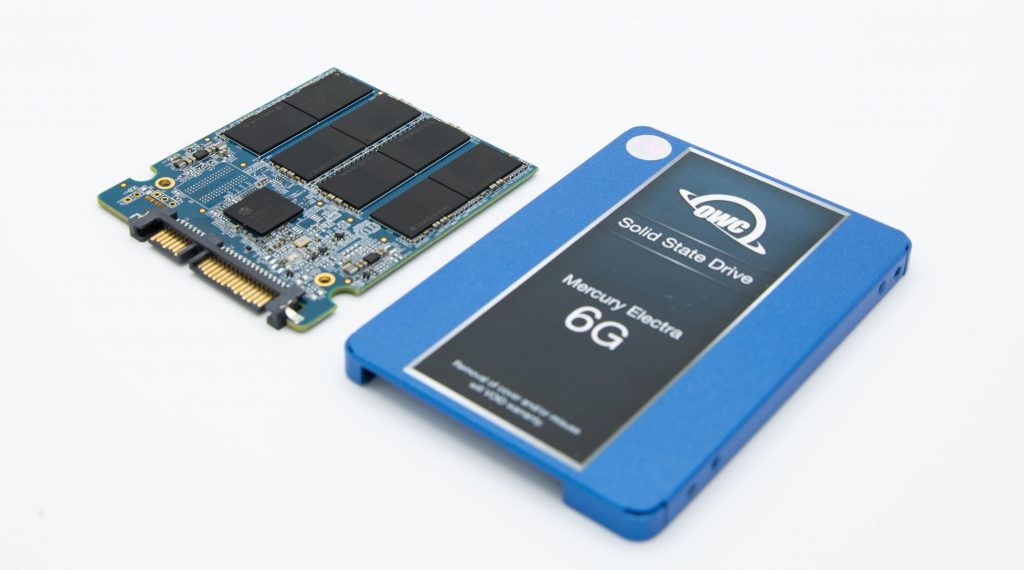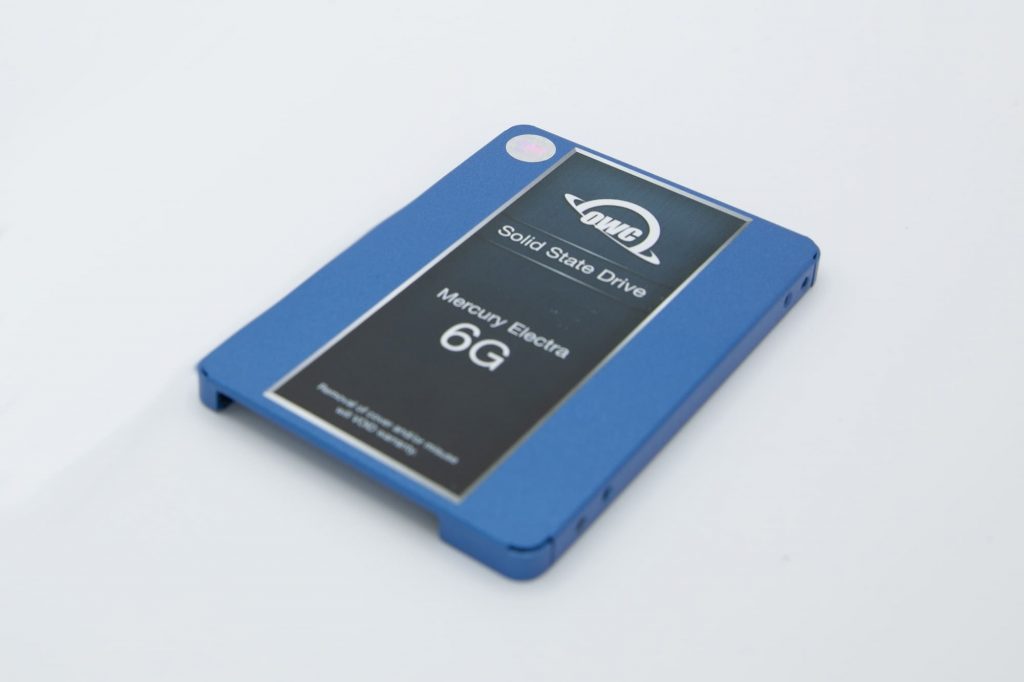Solid State Drives (SSDs) have become popular over the years as they offer a significant upgrade in speed and reliability. This is estimated when comparing to traditional hard disk drives (HDDs). One of the specifications you may encounter while shopping for an SSD is TBW. In this blog post, we will explore what TBW means for SSDs and why it is an important specification to consider.
What is TBW SSD? TBW SSD Meaning
Endurance is a critical factor to consider when evaluating SSDs. It determines how long the drive will last before it becomes unusable. TBW stands for Terabytes Written, which refers to the total amount of data to write before SSD reaches its endurance limit. SSDs use NAND flash memory, which has a limited number of write cycles before it starts to degrade.
The more data an SSD writes, the more its NAND cells degrade, which can lead to reduced performance and data loss. TBW is an essential specification to consider when selecting an SSD, especially for users who write large amounts of data regularly. SSD manufacturers usually provide TBW ratings as part of the drive’s specifications. This allows users to compare and choose the best SSD for their needs.
How is TBW Measured and Calculated?
TBW is measured in terabytes (TB) and is calculated based on a drive’s capacity, rated in drive writes per day (DWPD). For example, an SSD with a 1TB capacity and a TBW rating of 600 writes 600TB of data over its lifetime.

If you divide this by the number of days in the warranty period, you can determine the drive’s DWPD rating.
For example, if the warranty period is three years or approximately 1,095 days, then the SSD’s DWPD rating would be:
600 TBW / 1,095 days = 0.547 DWPD
In other words, the drive can sustain 0.547 full-capacity writes per day throughout its warranty period.
It is worth noting that TBW ratings are an estimate and may vary depending on several factors. These factors include type of NAND memory, the manufacturing process, and the workload that the drive is subjected to. Nevertheless, TBW remains a useful metric for comparing SSDs from different manufacturers.
Importance of SSD Endurance TBW
So, why is TBW important? The higher the TBW rating, the longer the SSD is expected to last. If you plan to use SSD for a long run in heavy workloads, choosing a drive with a high TBW is essential.
Moreover, higher TBW ratings are often an indication of better-quality NAND memory and more advanced manufacturing processes. This can improve the drive’s overall performance and reliability. This is because manufacturers often use higher-grade NAND flash memory in SSDs with higher TBW ratings. These devices can handle more write cycles before degrading.
On the other hand, if you use an SSD for everyday tasks, a lower TBW may be sufficient for you. In this case, you may not require an SSD with the highest TBW rating. In addition, you will save some money by choosing a lower-capacity drive with a lower TBW rating.
It is also essential to note that TBW is not the only factor that determines an SSD’s lifespan. Other factors like temperature, humidity, and mechanical stress can also affect the drive’s longevity. Therefore, it is crucial to follow the manufacturer’s guidelines on properly using and maintaining your SSD to ensure it lasts longer.

TBW is an essential specification to consider when selecting an SSD, as it determines the drive’s endurance and overall lifespan. When a solid-state drive’s lifespan comes to an end, a user will face data loss. In such situations, entrusting your case to a professional data recovery company like PITS is critical.
Advantages of Our Recovery Services
At PITS Global Data Recovery Services, we understand that SSDs have a limited lifespan and may eventually reach their endurance limit. Data loss can occur when this happens, and recovering that data can be challenging. That is why we offer data recovery services for SSDs that have reached their TBW limit.
Our team of highly trained specialists has extensive knowledge of SSDs. They can recover data from drives that have exceeded their TBW limit. We use advanced equipment to retrieve data from damaged or degraded NAND flash memory cells, ensuring the highest success rate.
Why Choose Us
PITS Global Data Recovery Services delivers premium data recovery solutions with a focus on quality and individual care for every case. As a DUNS-verified business, we are committed to excellence, ensuring 100% customer satisfaction. Our tailored service options suit a range of recovery needs and budgets. For critical situations, we offer emergency data recovery, restoring data quickly and reliably without compromising quality.

If you’re facing a data loss situation, don’t hesitate to contact us. Our 24/7 data recovery services are available to you, 365 days a year. Let us help you recover your precious data today.

We start the recovery process with a risk-free evaluation. Our technicians estimate reasons for data loss and the level of damage. Based on it, we select the most suitable recovery strategy.

With years in the data recovery industry, our company supports the highest customer satisfaction rate. We do everything to provide a positive experience for our clients.

During our remote customer file verification session, you will thoroughly review all necessary documents and records to ensure accuracy and compliance.

We offer data recovery services from over 50 locations across the US. This means that no matter where you are located, you can access our services to recover the data.

With our certified data recovery services and 99% success rate, we are confident that we can recover your precious data and get you back up and running in no time.
We understand the importance of data recovery and are committed to providing the highest quality service. We use strict data security protocols to ensure your recovered data is safe and confidential.
Reaching the endurance limit of an SSD can be a daunting task. However, our team of experts at PITS can recover data from SSDs that have exceeded their TBW limit. We obtain state-of-the-art equipment and proprietary software to recover data from flash storage devices.
Contact us today to learn more about our SSD data recovery services and how we can help you restore your data. You can get in touch with us by filling out the form below or calling our customer service directly.
Frequently Asked Questions
What does TBW stand for?
TBW stands for “Terabytes Written.” It is a measurement used to quantify the total amount of data that can be written to a Solid State Drive (SSD) before its expected lifespan or warranty expires.
Why is TBW important for an SSD?
TBW is an important metric for SSDs because it provides an estimate of the drive’s endurance or durability. It helps users understand how much data they can write to the SSD over its lifetime before potential wear and tear may affect its performance or reliability.
How is TBW calculated?
TBW is calculated based on the total number of terabytes (1 terabyte = 1,000 gigabytes) that can be written to the SSD during its lifespan. SSD manufacturers determine this value through extensive testing, taking into account various factors such as the NAND flash memory type, controller technology, and firmware optimizations.
What affects the TBW rating of an SSD?
Several factors can impact the TBW rating of an SSD. The NAND flash memory type and quality are significant determinants, as different types of NAND cells have varying endurance levels. Higher-quality NAND generally offers higher TBW ratings. Additionally, factors such as the controller’s efficiency in wear leveling and garbage collection algorithms can influence the TBW rating.
How does TBW relate to SSD longevity?
The TBW rating provides an estimation of the SSD’s longevity. However, it is essential to note that TBW is based on an average workload and may not precisely indicate how long an SSD will last in a specific usage scenario. It serves as a guideline for comparing SSDs and understanding their relative endurance capabilities.
Should I be concerned about the TBW rating?
While TBW is an important consideration, for most typical consumer workloads, it is unlikely that the average user will reach the TBW limit within the SSD’s lifespan. SSDs have advanced wear leveling algorithms that distribute write operations across the drive evenly, maximizing their endurance. As long as you are not engaging in extremely write-intensive activities, such as constant video editing or data-intensive server workloads, the TBW rating should not be a major concern.
What happens when an SSD reaches its TBW limit?
When an SSD reaches its TBW limit, it does not suddenly become unusable. Instead, it means that the drive has reached its specified endurance level, and there is a higher likelihood of individual NAND cells becoming less reliable. At this point, the SSD may experience reduced performance or a higher chance of encountering errors. However, modern SSDs often have additional spare cells and advanced error correction techniques to mitigate these effects and continue functioning beyond the TBW limit.
Are higher TBW-rated SSDs always better?
Not necessarily. While a higher TBW rating generally indicates better endurance, it may not be a crucial factor for typical consumer use cases. Consider your specific needs and usage patterns when choosing an SSD. Factors such as performance, price, reliability, and warranty terms should also be taken into account. It’s worth noting that higher TBW-rated SSDs tend to be more expensive, so it’s important to strike a balance between your requirements and budget.
How can I monitor the TBW of my SSD?
Many SSD manufacturers provide software utilities or tools that allow users to monitor the health and usage of their SSD, including TBW. These tools may provide real-time information about the drive’s remaining endurance, as well as other performance metrics. Check the manufacturer’s website or support documentation for recommended software for your specific SSD model.
Can I extend the lifespan of my SSD?
While you cannot directly increase the TBW rating of an SSD, there are practices that can help prolong its lifespan. Avoid excessive write operations, defragmentation, and unnecessary disk-intensive activities. Regularly update your SSD’s firmware to benefit from any performance and endurance optimizations provided by the manufacturer. It’s also advisable to maintain a backup strategy to protect your data in case of any unexpected failures.


